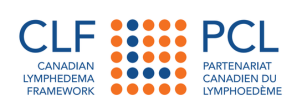A patient registry is a collection of information from patients and health care professionals about a specific medical condition, as well as its treatment and treatment outcomes. By collecting this information, researchers and physicians are able to better understand the disease, side effects and the effect of a variety of treatments.
Listed here are several lymphedema patient registries, their goals, and how you can register.
LE&RN – The National Lymphatic Disease Patient Registry and Tissue Bank will include a representative and well-characterized population of patients, with associated biological materials to serve as a source for the clinical and laboratory study of lymphatic diseases. This registry is confidential, and contains information about individuals who have been diagnosed with lymphedema or a lymphatic disease. This information will enhance the future ability of health care professionals to accurately identify, categorize, treat and prevent these diseases. All patients are encouraged to participate in this important initiative.
NLN – The National Lymphedema Network website (in the United States), offers a variety of patient registries and clinical trials that require patient participation. The trials range from a therapist survey to lymphedema trials for breast cancer.
Stanford School of Medicine is conducting a research effort surrounding breast cancer and lymphedema. Housed at Stanford University and directed by Dr. Stanley Rockson, The National Breast Cancer Lymphedema Registry is a confidential database that contains information about individuals who might be at risk of developing lymphedema because of prior surgical lymph node removal and/or radiation therapy, with the goal of improving diagnoses, treatment and possible prevention.
